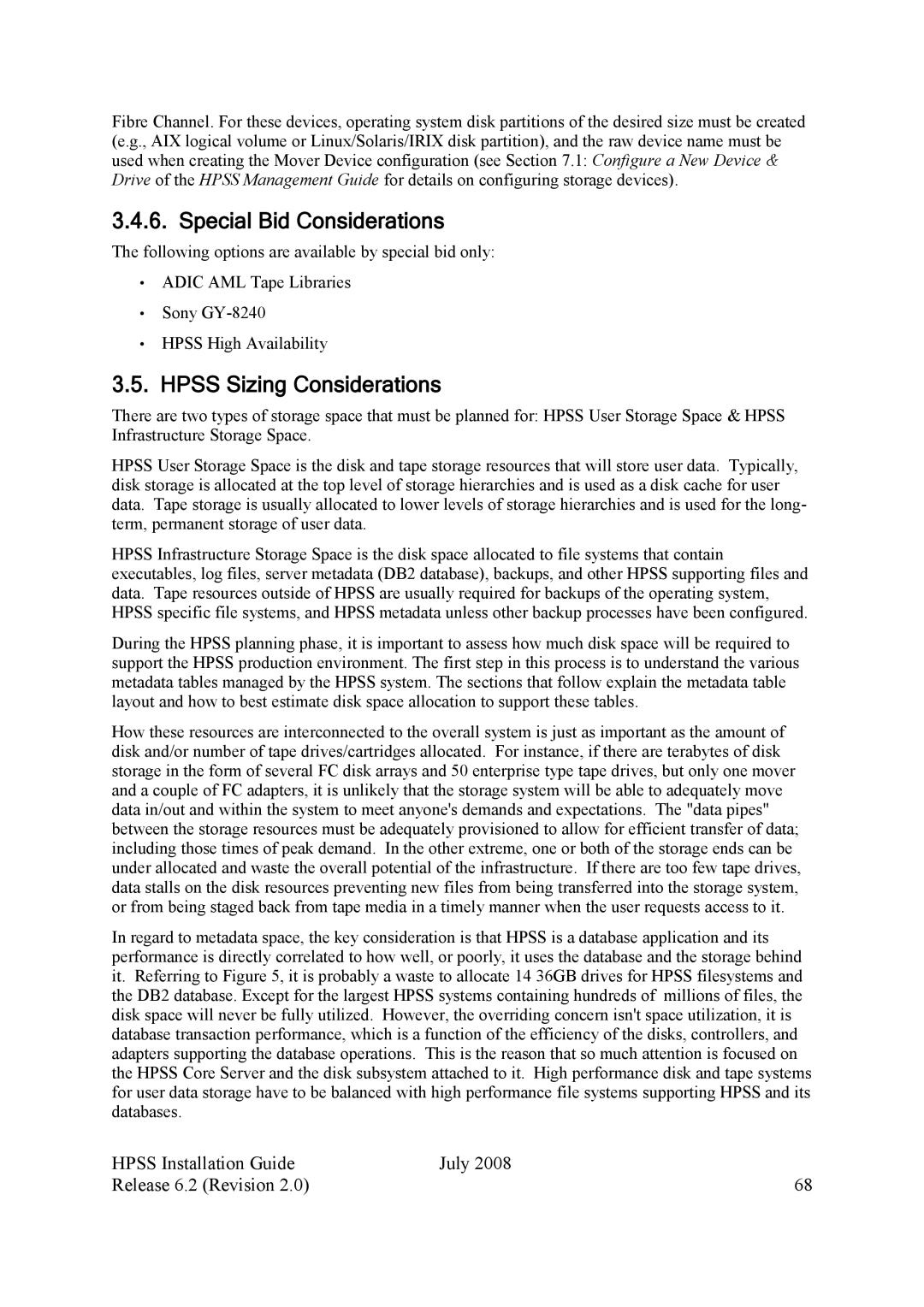Fibre Channel. For these devices, operating system disk partitions of the desired size must be created (e.g., AIX logical volume or Linux/Solaris/IRIX disk partition), and the raw device name must be used when creating the Mover Device configuration (see Section 7.1: Configure a New Device & Drive of the HPSS Management Guide for details on configuring storage devices).
3.4.6. Special Bid Considerations
The following options are available by special bid only:
•ADIC AML Tape Libraries
•Sony
•HPSS High Availability
3.5. HPSS Sizing Considerations
There are two types of storage space that must be planned for: HPSS User Storage Space & HPSS Infrastructure Storage Space.
HPSS User Storage Space is the disk and tape storage resources that will store user data. Typically, disk storage is allocated at the top level of storage hierarchies and is used as a disk cache for user data. Tape storage is usually allocated to lower levels of storage hierarchies and is used for the long- term, permanent storage of user data.
HPSS Infrastructure Storage Space is the disk space allocated to file systems that contain executables, log files, server metadata (DB2 database), backups, and other HPSS supporting files and data. Tape resources outside of HPSS are usually required for backups of the operating system, HPSS specific file systems, and HPSS metadata unless other backup processes have been configured.
During the HPSS planning phase, it is important to assess how much disk space will be required to support the HPSS production environment. The first step in this process is to understand the various metadata tables managed by the HPSS system. The sections that follow explain the metadata table layout and how to best estimate disk space allocation to support these tables.
How these resources are interconnected to the overall system is just as important as the amount of disk and/or number of tape drives/cartridges allocated. For instance, if there are terabytes of disk storage in the form of several FC disk arrays and 50 enterprise type tape drives, but only one mover and a couple of FC adapters, it is unlikely that the storage system will be able to adequately move data in/out and within the system to meet anyone's demands and expectations. The "data pipes" between the storage resources must be adequately provisioned to allow for efficient transfer of data; including those times of peak demand. In the other extreme, one or both of the storage ends can be under allocated and waste the overall potential of the infrastructure. If there are too few tape drives, data stalls on the disk resources preventing new files from being transferred into the storage system, or from being staged back from tape media in a timely manner when the user requests access to it.
In regard to metadata space, the key consideration is that HPSS is a database application and its performance is directly correlated to how well, or poorly, it uses the database and the storage behind it. Referring to Figure 5, it is probably a waste to allocate 14 36GB drives for HPSS filesystems and the DB2 database. Except for the largest HPSS systems containing hundreds of millions of files, the disk space will never be fully utilized. However, the overriding concern isn't space utilization, it is database transaction performance, which is a function of the efficiency of the disks, controllers, and adapters supporting the database operations. This is the reason that so much attention is focused on the HPSS Core Server and the disk subsystem attached to it. High performance disk and tape systems for user data storage have to be balanced with high performance file systems supporting HPSS and its databases.
HPSS Installation Guide | July 2008 |
Release 6.2 (Revision 2.0) | 68 |
